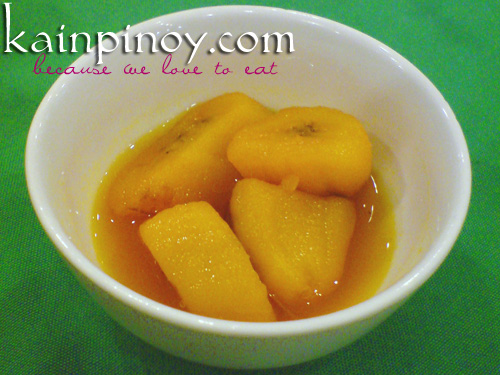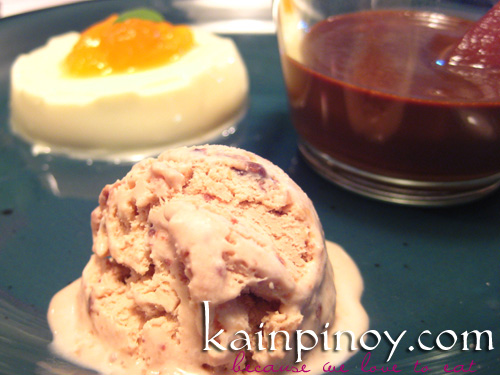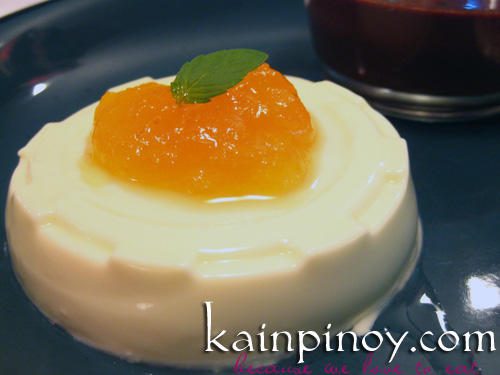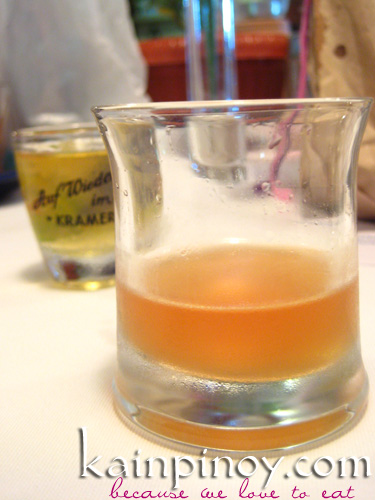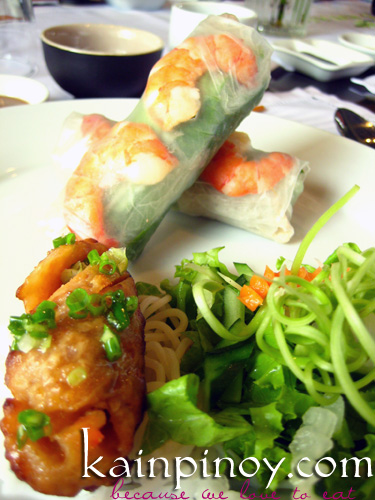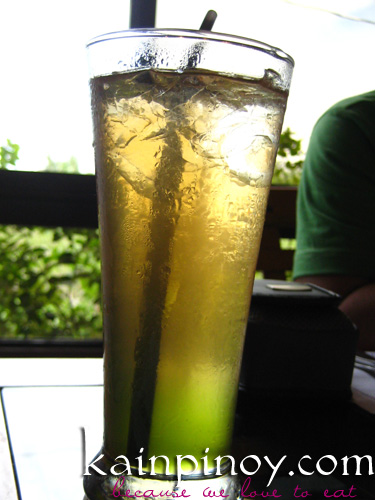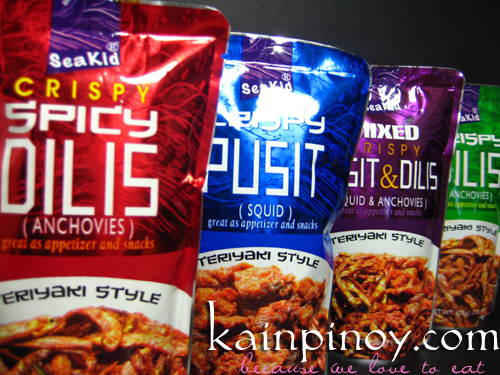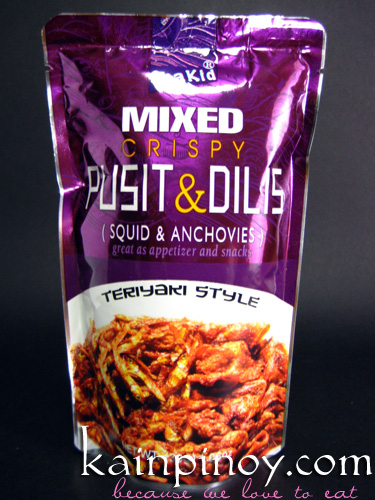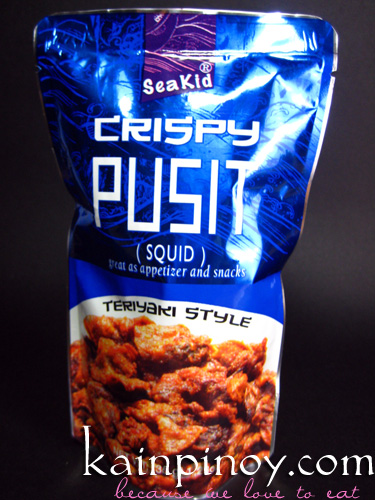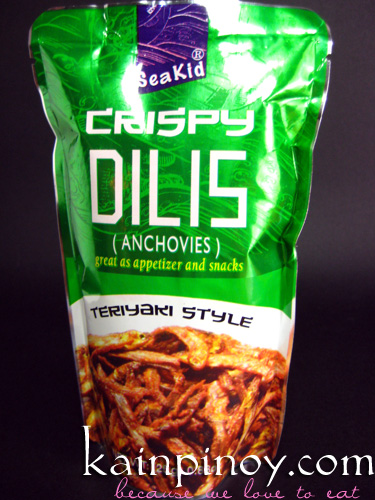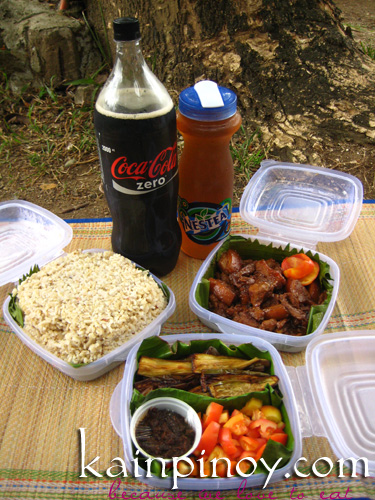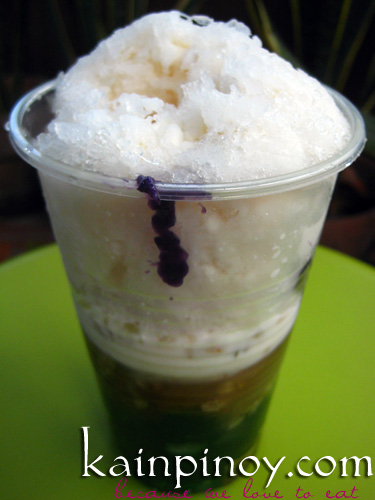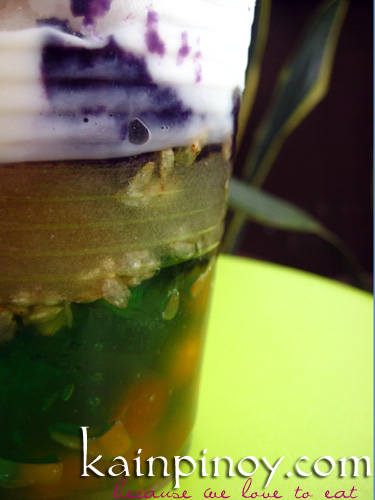It was getting fairly late, so after our merienda stop at the T House, we hurriedly hopped back into the bus for the drive down to Laguna, where our last food stop is.
Kanin Club was borne out of a craving — a craving for rice. Tony Cancio and his bike buddies often bike in the area and they always end up at the Cafe Breton, which he co-owns. After a long bike ride, rice was on top of the list of the things they want to eat, but the creperie wasn’t serving any. So the Kanin Club was born. Serving classic Filipino dishes (that just begs to be eaten with mounds of rice), their menu also lists 9 different kinds of rice, including plain white rice, brown rice, and a slew of fried rice variants like Tinapa Rice and Aligue Rice.
Enough talk… on to the feast!
 Crispy Liempo – Php 117
Crispy Liempo – Php 117
The first dish to arrive at our table was this bowl of Crispy Liempo. It looked so appetizing and so tempting, and after the first bite, we were hooked! The liempo (pork belly) was thinly sliced and deep fried to crispy perfection.
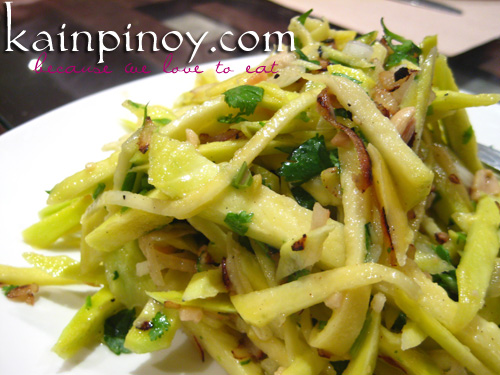 Thai Green Mango Salad – Php 142
Thai Green Mango Salad – Php 142
Green mango lovers will definitely love this salad. The cilantro gives a zing that compliments the sourness of the mango.
 Sinigang na Tadyang ng Baka – Php 302
Sinigang na Tadyang ng Baka – Php 302
I love sinigang and I loved Kanin Club’s take on my favorite Filipino dish. The soup was sour enough for that distinct sinigang taste, but not too sour to turn you off. The vegestables were cooked just right, and the beef? It’s so tender it’s falling off the bone.
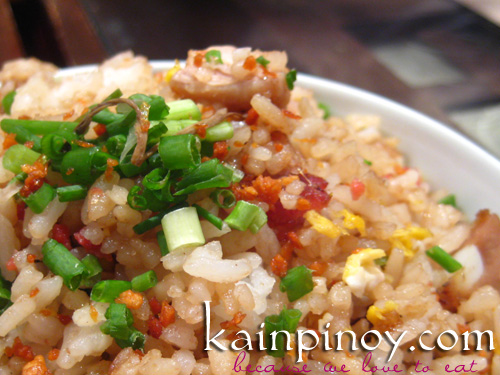 Loaded Fried Rice – Php 148
Loaded Fried Rice – Php 148
My favorite among the rice we were served, this fried rice was really loaded: it has Chinese sausage, crab meat, ham, green peas, bits of sauteed pork, scrambled egg and roasted garlic. It’s a meal on its own, actually.
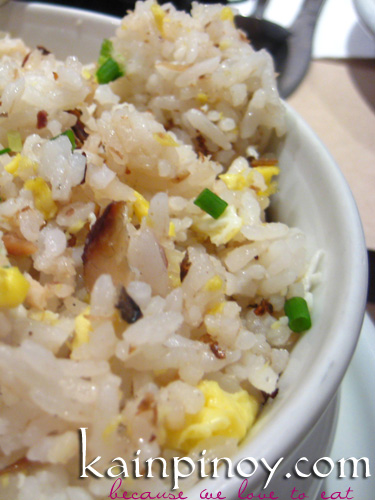 Tinapa Rice – Php 123
Tinapa Rice – Php 123
I’m a fan of tinapa (smoked fish), so I really enjoyed Kanin Club’s Tinapa Rice. The bits of smoked fish transforms the regular fried rice into something extraordinary.
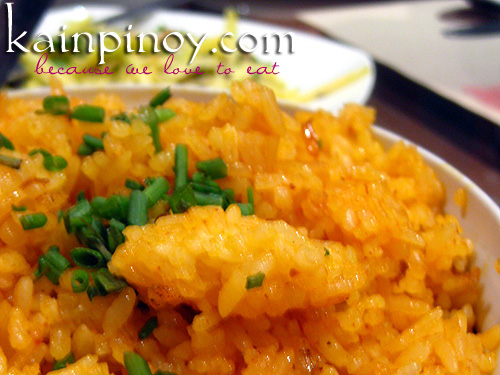 Aligue Rice – Php 123
Aligue Rice – Php 123
The rice that Ryan was looking forward to. Cooked in crab fat, this is certainly not for the faint of heart (or those with high cholesterol).
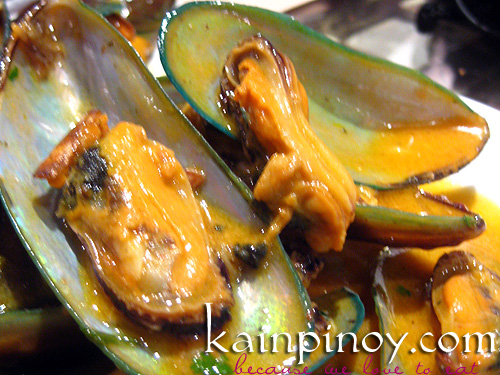 Spicy Tahong – Php 179
Spicy Tahong – Php 179
I don’t eat tahong (mussels), so taking this photo was the closest I got to this dish. But from what I’ve heard and read, it was yummy.
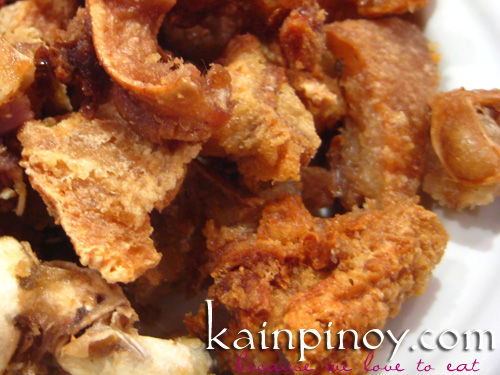 Crispy Tenga – Php 148
Crispy Tenga – Php 148
Deep fried and crispy, this dish is the perfect pulutan (food you eat while drinking beer) or as a snack. Nevermind that it made with pig’s ear — it’s a must try!
 Chicken Curry – Php 172
Chicken Curry – Php 172
I was getting quite full at this point (we were eating the whole day, it’s hard NOT to be full!), so I gave the chicken meat a miss, but since I love curry, I tasted the sauce. It was a great curry, actually. The sauce had that rich curry taste and was perfect with the rice.
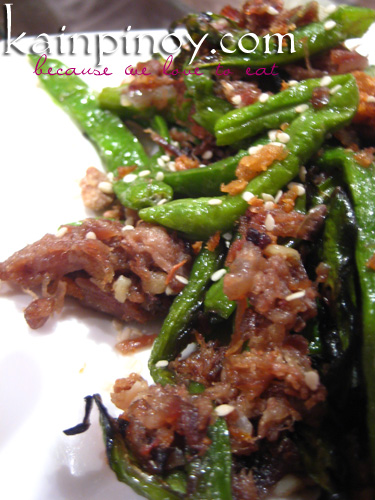 Itsi Bitsi – Php 185
Itsi Bitsi – Php 185
We’ve been having mostly meaty (not to mention deep fried) dishes, so having a veggie dish was certainly welcomed (mainly by me). The name of the dish comes from its ingredients — It‘s sitaw, bitsuelas and sigarilyas.
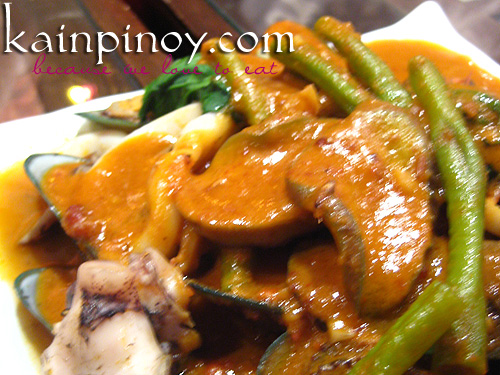 Seafood Kare-Kare – Php 246
Seafood Kare-Kare – Php 246
Squid, mussels and prawn replaces the traditional beef/pork and ox tripe in Kanin Club’s version of our favorite kare-kare. But it’s not the seafood that makes this dish a winner — it’s the rich peanut sauce that makes the dish so good on its own. Careful with that bagoong they serve along with it though, it’s a tad too salty.
 Crispy Dinuguan – Php 216
Crispy Dinuguan – Php 216
This is exactly the kind of Filipino dish that would send foreigners running: pork intestines cooked in pork blood. It doesn’t sound appetizing, but it was a spectacular stroke of genius. It was a heady mix of oil and blood. That sounded so wrong, but it tasted oh, so right.
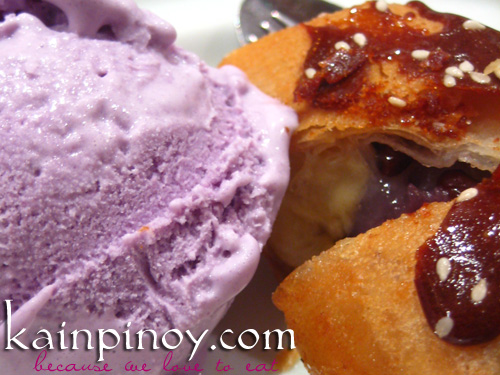 KC Turon ala Mode – Php 111
KC Turon ala Mode – Php 111
After fourteen dishes, all of us were full to the brim. However, Kanin Club’s famed turon was so good that most of us wasn’t able to resist eating just half of our turon. Deviating from the usual turon, the KC Turon was filled with a slice of banana, ube (purple yam jam), coconut strips and monggo beans. As the Kanin Club Menu says, it’s halo-halo on a roll.
Kanin Club is high on the list of must-try restaurants in the Philippines. Its location (Sta. Rosa and the recently opened Alabang branch) is too far for Quezon City residents, but as Anton said, it’s a good way of starting or ending your Tagaytay trip.
Kanin Club
Paseo de Sta. Rosa, Laguna
Phone: (049) 544-0332
West Gate, Filinvest Corporate City, Alabang, Muntinlupa
Phone: 771-1400
E-mail: kaninclub@gmail.com
A big thanks to Verdana Homes and to Anton for this awesome Tagaytay food tour, and to Kanin Club for the unforgettable feast.

